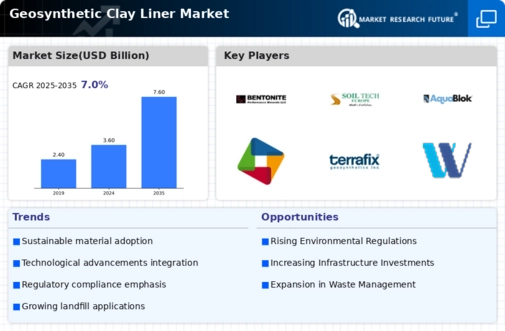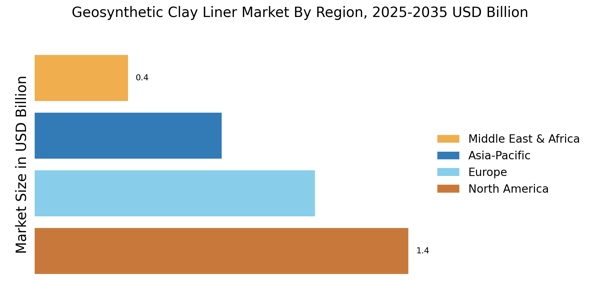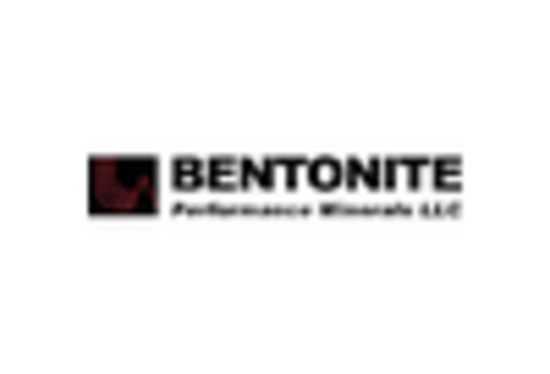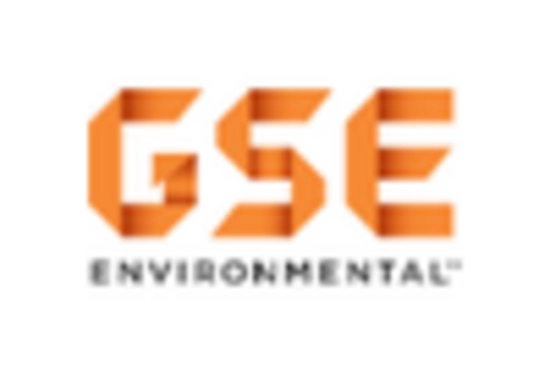Infrastructure Development Initiatives
Infrastructure development initiatives are significantly influencing the Geosynthetic Clay Liner Market. Governments and private entities are investing heavily in infrastructure projects, including roads, bridges, and tunnels, which require effective soil stabilization and erosion control measures. Geosynthetic clay liners are increasingly recognized for their ability to provide reliable solutions in these applications. The market for infrastructure development is expected to reach USD 4 trillion by 2026, indicating a robust demand for geosynthetic materials. As projects expand, the need for innovative and efficient materials like geosynthetic clay liners will likely grow, further propelling the market. The integration of these liners in construction projects not only enhances performance but also contributes to sustainability goals, making them an attractive option for developers.
Environmental Regulations and Compliance
The Geosynthetic Clay Liner Market is significantly shaped by stringent environmental regulations and compliance requirements. Governments worldwide are implementing stricter guidelines to mitigate environmental risks associated with waste disposal and land use. Geosynthetic clay liners are recognized for their effectiveness in preventing groundwater contamination, making them a preferred choice for compliance with these regulations. The market is projected to witness a growth rate of around 6% annually as industries adapt to these evolving standards. Companies are increasingly investing in geosynthetic clay liners to ensure adherence to environmental laws, thereby enhancing their operational sustainability. This trend not only supports regulatory compliance but also promotes the adoption of innovative materials that align with environmental protection goals.
Technological Innovations in Geosynthetics
Technological innovations are playing a crucial role in shaping the Geosynthetic Clay Liner Market. Advances in material science and engineering have led to the development of high-performance geosynthetic clay liners that offer enhanced durability and efficiency. These innovations are likely to improve the performance of liners in various applications, including mining, landfill, and civil engineering projects. The market for geosynthetics is expected to grow at a rate of 7% annually, driven by these technological advancements. As manufacturers continue to invest in research and development, the introduction of new products with superior properties will likely attract more users to geosynthetic clay liners. This trend indicates a shift towards more sophisticated solutions that meet the demands of modern engineering challenges.
Rising Demand for Waste Management Solutions
The Geosynthetic Clay Liner Market is experiencing a notable increase in demand for effective waste management solutions. As urbanization accelerates, the need for efficient landfill designs and containment systems becomes paramount. Geosynthetic clay liners, known for their impermeability and durability, are increasingly utilized in landfill applications to prevent leachate migration. According to recent data, the waste management sector is projected to grow at a compound annual growth rate of approximately 5.5% over the next five years. This growth is likely to drive the adoption of geosynthetic clay liners, as municipalities and private companies seek to enhance their waste containment strategies. Furthermore, the emphasis on sustainable waste management practices aligns with the capabilities of geosynthetic clay liners, making them a preferred choice in the industry.
Growing Awareness of Environmental Sustainability
The growing awareness of environmental sustainability is a key driver for the Geosynthetic Clay Liner Market. As stakeholders increasingly prioritize eco-friendly practices, the demand for materials that minimize environmental impact is on the rise. Geosynthetic clay liners are recognized for their low carbon footprint and effectiveness in reducing soil and water contamination. The market is anticipated to expand as industries seek sustainable alternatives for construction and waste management. Recent studies suggest that the adoption of geosynthetic materials can lead to a reduction in resource consumption by up to 30%. This growing emphasis on sustainability not only aligns with global environmental goals but also positions geosynthetic clay liners as a viable solution for environmentally conscious projects.


















Leave a Comment